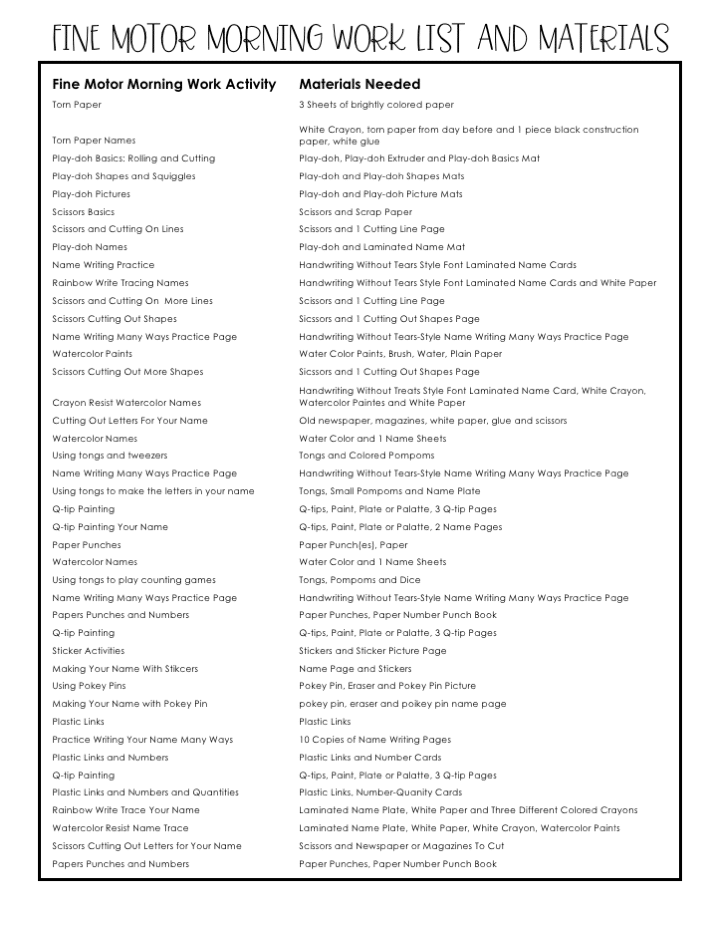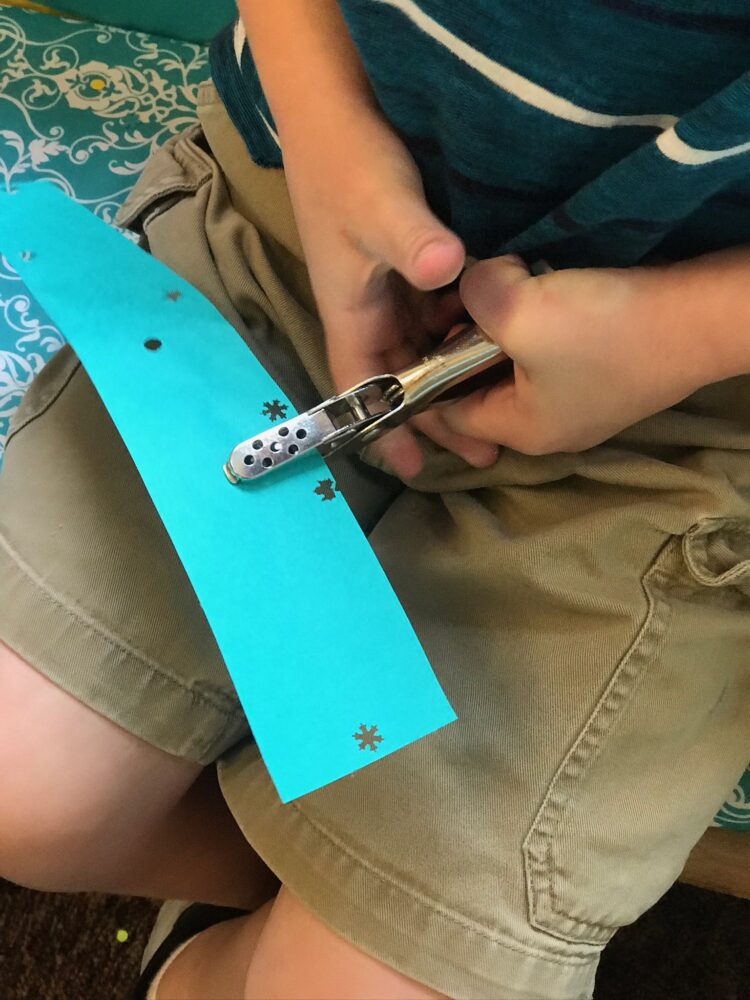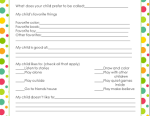Like so many of you, our district is required to have a virtual option for students. But, also like many of you, a boxed curriculum for kindergarten is does not always and adequately address the whole child or what a five year old needs to get ready for school. So when we started discussing what virtual kindergarteners needed, of course, our team said ‘fine motor’ and hands-on and movement. But how do you incorporate that into a virtual platform? Well, you can’t. There absolutely has to be some kind of Take-Home Fine Motor Kit. So let me show you what we came up with. . .
THE PLAN

So our district opted to adopt Schoology as our district-widehttps://www.schoology.com/ LMS. Had we ever used Schoology before? Nope. But they wanted something to use K-12 and this was the option they choose. We all know that there really isn’t any program that is going to be ideal for both Kindergarten and High School, but at least I knew that I could link up Boom Cards and Seesaw activities to make activities a bit more user friendly and engaging for students and teachers.
Because we couldn’t find a perfect virtual kindergarten curriculum, our team decided that we would create lessons and activities ourselves and input them into Schoology. This way, if we had to close down for several days or more, we would be able to provide our classroom students with the same virtual content that our full-time virtual students were getting and it would be familiar and be closely aligned to what we were doing in our own class. Plus, if the students opted to bump back into face-to-face, they would be familiar with many of the routines and lessons that we were doing in class. Of course, this meant a lot of work for our kindergarten team, but we were willing to do it to have control over the content being used. We decided to divvy up the work amongst us. Amongst some ELA and Math lessons, I also choose to tackle fine motor, because, quite honestly, I am passionate about making sure this intricate part of kindergarten does not get dismissed for virtual students.
THE TOOLS
So in addition to providing activities and materials to support fine motor activities, I also knew that I would need to give some pretty detailed instruction. For that reason, I went ahead and created recorded lessons showing students how to use the various tools that they would see in their initial 9 week kit and that would be used throughout the year.

I used a variety of tools to accomplish this. One very important one was my document camera that came with my AliveStudios materials last year. I use Letters Alive to reinforce letter recognition and other ELA and Math skills in my classroom and when my district shut down in March, I grabbed that document camera and took it home with me . . . just in case. Thank goodness. My document camera along with Screencast-O-Matic video recording and editing made it super easy for me to record my lessons, edit them if necessary and upload them directly to Youtube. From there I just had to add the embedded video link into my Schoology lesson page for Fine Motor and I was all set. This is kind of what it looks like when students open it up.

Trust me. These are NOT some professional Youtube cinematic masterpieces. I’m ready to start updating my resume to include ‘Youtube teaching sensation,’ but they are good enough to give students a lesson in the proper way to hold a pair of scissors, to tear paper, roll play-doh or use a pokey pin. So here’s one I did to introduce using scissors.
The Activities
So when I was trying to decide which activities to include in these first 9 weeks of activities, I tried to focus on what tools and skills I would want that students to have if they were to phase back into my classroom after 9 weeks and which I felt would be most beneficial to building hand strength. Remember, I’m not an OT. I’m just a kindergarten teacher, so these are the activities that I personally thought were doable and home AND valuable to helping with fine motor.

You can find my list below. (There’s a hard copy in the free download at the end of the post.) A few activities are repeated like q-tip painting because I have a couple of different pictures I used or like with the name writing pages, I wanted them to practice it more than once and extend their learning and develop mastery.

What’s In The Kit
So then what did we include in the kit to support the activities above? Why don’t you let me show you! I’m going to go ahead and link printable and where I procured products. I have linked my Amazon Store where you will find the Virtual Learners Morning Work Kit idea list. That is where you will find all the items I used and that you may want to consider adding to your own kit. There are some free printables that I’m sharing with you here, but some of the items are part of items that I may have for sale in my store as well.

Editable Name Plate
Because your virtual students will not have the advantage of a classroom where letters and numbers are posted, they will need to have something to reference those items. For this reason, I have a simple little name card using a Handwriting Without Tears-Style font that also has letters, numbers, shapes my class learns, colors, and left and right hands. There are a couple of different styles that I created. It’s nothing fancy but if you’d like a copy for yourself, feel free to grab the FREE DOWNLOAD at the end of this post.
Torn Paper Activities

All you need for these are:
- a couple pieces of bright colored (I prefer Astrobrights) paper
- white school glue
- 11×18 piece of black construction paper
Play-doh Activities

- 2-3 different colored 3oz cans of Play-doh
- 1 Play-doh extruder
- Play-doh scissors
- Free Play-doh Skills Starter Packet with basics, shapes and squiggles and pictures (Grab them HERE.)
- Play-doh name mat which you’ll find in my Getting Started with Morning Stations packet HERE.

Scissor Activities

- Fiskers student scissors
- scrap paper
- cutting on lines sheets (These are available in my Getting Started With Morning Word packet found HERE.)
- cutting out shapes sheets (I have some simple shape pages that I have also included in the FREE download at the bottom of this post if you need them.)
Name Writing Practice

I like to give my students several ways to practice writing their name. Even for students who may know the letters and be able to get them down on paper, sometimes the mechanics of the letters aren’t quite right so they need to practice. I have several ways for them to practice writing their name in the kit. Here are some the supplies you will need including a few freebies utilizing a Handwriting Without Tears-style font.
- Crayola Crayons
- Scissors
- Markers
- Watercolor Paints
- Laminated Name Mat ( I have included an editable version for you to use in the FREE download at the end of the blog post if you need it.)
- Name Writing Several Ways Printable Sheet (Available HERE)
- Watercolor Editable Name Sheets in several varieties to practice many times. (Available HERE)

Activities Using Tongs

Tongs and tweezers are essential for building fine motor and developing good hand-eye coordination. You can get them in a variety of shapes and sizes and use them for a boat load of activities throughout the year.
- a small set of tongs (I like these little inexpensive hand ones!)
- tweezers
- Pompoms in three sizes (You can get pompoms pretty inexpensively and they will go a long way throughout the year for a variety of activities.)
- Name writing practice sheet (Found in the Getting Started With Morning Work packet.)
- dice
Q-tip Painting Activities
My students will be using this activity throughout the year so it’s very important that they learn the routines and expectations early on. The first 9 week activities for q-tip painting will get the ready for the rest of the year.

- a handful of q-tips
- small plastic palette
- small squirt bottle for a couple colors of paint
- tempera washable paint
- q-tip name sheet (Available in the Getting Started with Morning Work Stations packet.)
- Back to School Q-tip painting pages (Available HERE.)

Paper Punches

Paper punches are a guarenteed muscle builder.
- basic paper hole punch
- Paper Punch Number Book (I have included it in the FREE Download at the end of this blog post.)
- I also have letter punch cards if you can use them for FREE HERE.

Sticker Activities

These activities are another that I use throughout the year in a variety of ways. The pealing and placing of those little stickers are tricky and great fine motor work.
- several sheets of small stickers
- apple sticker sheet (Included in the FREE download at the end of this blog post.)
- Name sticker sheet (Available in the Getting Started with Morning Work packet HERE.)

Pokey Pin Activities

Many years ago, Krissy Miner from Mrs. Miner’s Monkey Business, a pioneer kindergarten teacher in the blogging world, introduced me to pokey pins. She has a slue of products that I use throughout the year and you can check them all out in her TpT store HERE I have included a freebie to get you started and a list of the other items you will need for these activities. (I don’t make pokey pin products because Krissy really is the originator of these. I respect her work and would love for you to check out her products. She was a dear friend of mine who died unexpectedly last summer leaving two teenage boys behind. Her store remains open for them.)

- thumbtack or another pushpin
- small eraser (I like pink ones.)
- construction paper
- stapler
- pokey pin name sheet (Available in my Getting Started With Morning Work Pack HERE.)
- Back to School Pokey pin sheet (Available in the free download.)
Plastic Link Activities

Admittedly, I used to have a tub of these lovelies in my cupboard and didn’t have a clue what to do with them. Now I use them literally every day. Don’t put away this great fine motor tool.
- plastic links
- plastic link number cards -laminated (I used ones from Pet Themed Morning Work Stations packet which you can see HERE. But I do have a free set of number cards that you could use HERE.)
- plastic link quantity cards-laminated (I used the ones from my Pet Themed Morning Work Stations packet that you can find HERE.)
Holding It All Together
And to hold it all together, I selected these containers from Michaels that were on sale a couple of weeks ago. There are some similar IRIS ones on Amazon. But I think I saw some from the Dollar Tree that would work just as well. You can even order them online.
In Addition . . .

In addition to this fine motor kit, we decided our virtual kiddos would need some math supplies as well. Luckily, many of the fine motor tools and items can cross over to be used for math, but we did add a few mats from my free MATH MATS (you can get them HERE) set along with a counting cup full of erasers.
And that’s pretty much it. I know you’re probably going to ask. “Can we see your videos, Marsha?” And I’m going to reply, “UGH.” Because I’m not very professional or polished. Taping lessons from my computer is an empty classroom is definitely not my ‘gift,’ but I’m willing to share what I did if it helps someone else. (Please be gentle. I did these in a vacant room in my school while construction had made me teacher-homeless. It is definitely NOT a very kindergarten-ish atmosphere.) Click HERE to see all the videos I made for each of the activities included in the kit.

And, oh yeah, the freebie. You can get several of the items I used by signing up for my email list and having the document delivered to you. Just fill out the form below to get started.
Pin It!
If you found this post helpful, please consider sharing it . . .







Leave a Reply